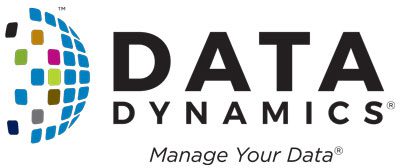A piece of data is like a puzzle; we derive valuable insights and information from it when it fits together and makes sense.
It is a puzzle that enterprises across the globe and industries are trying to solve. A few companies have solved this problem by getting maximum insights from their data and applying that information to gain meaningful insights, while most are taking strenuous routes or waiting for the road to be paved.
Did You Know?
- Gartner reports that 27% of data in the world’s top companies is inaccurate.
- A Forrester study found that 60-73% of data in organizations needs to be successfully used for strategic purposes.
- Forbes reports that 84% of digital transformation initiatives fail in enterprises.
The reason? – Bad data management!
A study by IBM Big Data Hub indicates that poor data quality costs the U.S. economy around $3.1 trillion annually. The management of data, whether it is on-premises or in the cloud, is complex. About 60% of businesses today use hybrid cloud strategies, making the situation more complex.
As part of the hybrid cloud model, data can be stored in local file systems, on-premises, through NFS or SMB file shares, or in the cloud, through Azure Blob Storage or Amazon S3, or a combination of these and other storage solutions, such as NetApp, IBM, and others. Such hybrid environments present complex data management challenges and require solutions that integrate seamlessly among these heterogeneous environments.
What are the best ways to manage data in a hybrid cloud environment?
When it comes to data management, there is no one-size-fits-all solution. The best way to approach data management in a hybrid cloud environment is first to identify your needs and then find a solution that meets those needs. Here are a few best practices to remember when starting your journey in a hybrid cloud environment.
Data Accessibility
Data access can be difficult for companies because data is often unstructured and stored in different places. IT departments can access this data in real-time with the right budget or expertise. However, it is possible to access data stored on-site and off-site in a hybrid cloud environment by making it available in a restricted environment. Storing frequently used data closer to applications or users can improve processing time and reduce latency, without investing in local infrastructure. This can be done by identifying which data is used most often and keeping it accessible to the application or user.
Data Analytics
As businesses strive for data-driven decision-making, they are turning to data oceans – a consolidated repository of internal and external data sources. By reducing the effort it takes to source and combine data, data teams can explore new analytical models and gain greater insights into decision-making. With efficient data analysis tools, businesses can better use their data to improve their bottom line.
Data Migration
Organizations can use public, private, and hybrid cloud solutions when migrating their storage to save money on infrastructure costs and avoid large capital expenditures. However, moving data from one storage location to another will only add complexity later. To prevent this, organizations should back up their data and use disaster recovery solutions and analytics to ensure a smooth transition. It is always best to follow a data-driven approach when migrating data, as this will help ensure that you get maximum value from your data.
Data Compliance
Combining cloud and on-premises computing can ease some of the critical regulatory requirements that come with holding onto data. For example, out-of-service systems may leave behind unassociated databases, many of which are valuable and have been around for a long time. This can create a data gap for analytic personnel and present security and compliance risks to organizations. Governments and regulatory bodies worldwide are collaborating with cloud service providers to establish standards for data retention periods and security measures, with teams of specialists leading the process. Furthermore, cloud-based data storage can also tackle the difficulties involved with data residency and data sovereignty rules, which become even more intricate as data crosses international lines.
Join Data Dynamics as you pave your road to effective data management
Data Dynamics‘ unified unstructured data management platform is your one-stop shop for all your data management requirements. The platform comprises four modules: Data Analytics, Mobility, Security, and Compliance. Enterprise customers can use Data Dynamics to do away with the need for individual point solutions and siloed data views. Instead, businesses may use a single software platform to organize their unstructured data, gain access to data-driven insights, secure data, ensure compliance and governance, and manage cloud data. Data Dynamics’ goal is to assist enterprises in democratizing access to data so that everyone, regardless of technical proficiency, can quickly access, comprehend, and gain the most knowledge from unstructured data.
Click here to learn more or reach us at solutions@datdyn.com I (713)-491-4298 I +44-(20)-45520800






